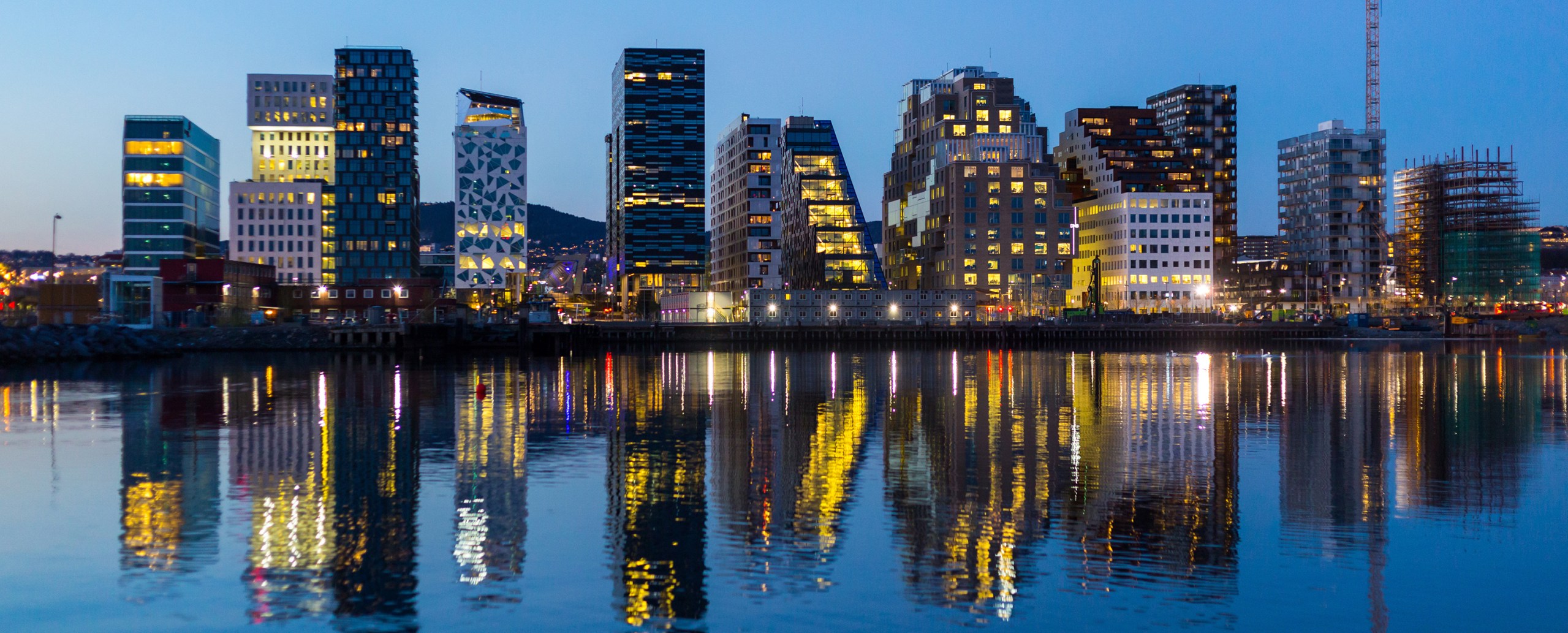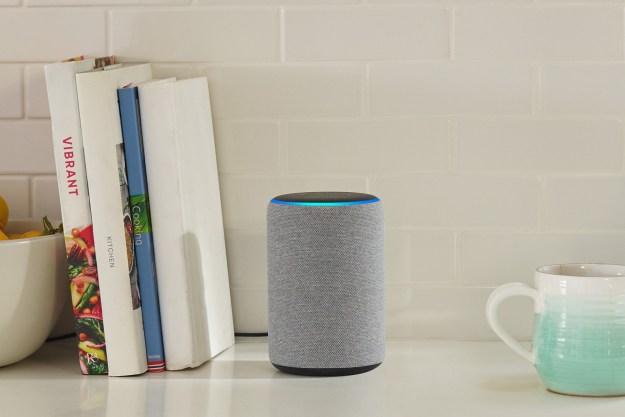Your city is dumb. The potholed streets, coin-operated parking meters, and drafty brick buildings many of us interact with every day haven’t changed much in a century. But it’s finally happening. From Oslo to San Diego, cities across the globe are installing technology to gather data in the hopes of saving money, becoming cleaner, reducing traffic, and improving urban life. In Digital Trends’ Smart Cities series, we’ll examine how smart cities deal with everything from energy management, to disaster preparedness, to public safety, and what it all means for you.
Oslo, Norway is one of the shining stars of the burgeoning “smart city” movement. Founded around 1040, the city is consistently highly rated in terms of quality of life.
The population’s quality of life continues to improve as a growing public-private partnership makes major investments to make Oslo a smarter, greener, more inclusive, and more creative city for all citizens. The key to Oslo’s success has been the application, deployment, and integration of new technology, as well as an ambitious and aggressive series of pilot programs designed to prove that futuristic technology can be used to build a smarter city.
Let’s take a look at some of the projects, people and places that are transforming Oslo into one of the smartest cities in Europe.
Setting a good example
The cornerstone of Oslo’s smart city efforts is the collaborative project FutureBuilt, which was established to support climate-friendly urban development in the region.
With an urban population of over 650,000 residents in the city alone and over 1.7 million citizens in the metropolitan area, the leadership of Oslo’s smart cities efforts realized that climate-friendly architecture and deliberate urbanism were the key to protecting its citizenry from harm.
“What used to be innovative madness is now the natural way of thinking.”
“The Oslo region faces major climate challenges,” says local mayor Lisbeth Hammer Krog. “Therefore, we need to look over the municipal boundaries. We need FutureBuilt to learn from each other.”
FutureBuilt is a 10-year program with the aim of developing 50 pilot projects involving climate-friendly buildings and city areas. It’s a collaboration between nearly a dozen disparate partners, including several municipal authorities, the Ministry of Local Government and Modernization, the Norwegian State Housing Bank, and the National Association of Norwegian Architects, among others.
There are specific criteria for being selected as a FutureBuilt project. The projects must reduce their carbon footprint by at least 50 percent compared to today’s standards, be located near major transport hubs, and be of high urban and architectural quality. To encourage innovation and quality, most FutureBuilt projects originate as the result of an architecture competition.
There are stunning jewels in the FutureBuilt portfolio of projects already. The Bjørnsletta School, built by Østengen & Bergo Landscape Architects, is a futuristic primary and secondary school for approximately 800 students. This passive-energy design uses automation to ensure an optimal indoor climate and energy use, while the design uses unusual spaces like the roof to offer more room for classes and places for students to stretch out and play. Solar access, minimum parking allocation, and expanded bike parking complete the picture of this architectural marvel

Elsewhere in Oslo, we find the Gullhaug torg, a 16-floor multifunctional building that demonstrates Oslo’s commitment to urban densification. The building is very close to net-zero energy use and doesn’t purchase any energy for ventilation, heating, or cooling. The building lines up perfectly with the goals of FutureBuilt by reducing carbon dioxide emissions by 50 percent. There’s no parking at all for cars, but it’s situated near a public transport hub.
But perhaps no other architectural vision in Oslo can match The New Munch Museum located on the east side of the Aker River in Bjørvika, which is expected to be completed in 2019. The architectural mock-ups of the building seem to bend the laws of physics, but the Spanish architectural firm studio Herreros assures Oslo’s citizens that the building will make a fine home for Edvard Munch’s collection. The building is a 12-story tower sheltered by a ventilated skin of corrugated, perforated aluminum plates. This ambitious project also meets FutureBuilt’s ambitious requirements and is expected to be a vital destination for tourists visiting Oslo.
The pilot projects are the core of FutureBuilt’s work, but that’s not its sole endeavor. In 2014, the organization launched the “Get a bike. Break free!” competition, an attempt to make bicycles the city’s preferred means of transportation. Oslo Byskkel, the city’s bike-sharing program, has over 130 rental hubs throughout the city.
FutureBuilt also organizes Norway’s most important conference for climate-friendly architecture and urban development and is a major partner in Oslo Architecture Triennale, Scandanavia’s biggest architecture festivals.
It’s taken some time for local leaders to embrace such ambitious innovation, but they’re starting to come around. “What used to be innovative madness is now the natural way of thinking,” says local mayor Tore Opdal Hansen.
Joining the electric vehicle parade
Another innovation that Oslo shares with other smart cities like San Diego is its dramatic embrace of electric vehicles (EV) and alternative transportation. In addition to the biking changes already well underway, Oslo’s government has put its support behind innovations like electric vehicles. This effort is vital to the city’s environmental goals, as emissions from transportation account for 60 percent of the greenhouse gas emissions in Oslo.
It’s an electric-car-owner’s paradise.
The success of Oslo’s EV program is due in no small part to a battery of local and national incentives designed to promote zero-emission vehicles. EV buyers don’t pay the 25-percent sales tax and enjoy free parking, access to the bus lane, free charging, and free transport on ferries. It’s an electric-car-owner’s paradise.
But that’s not all. Oslo kick-started the program by deploying a radically improved electrical infrastructure that includes over 2,000 charging points for electric vehicles throughout the city. The city also already replaced half of its 1,000-car fleet of vehicles with EV and plans to change out the rest as soon as possible.
Like many smart cities, Olso sees these major investments not as a burden but a benefit. These changes in how the citizens of Oslo navigate their city have proven to have corollary benefits, including new business opportunities in sectors like charging equipment, EV manufacturing, smart-grid technology, and renewable energy services. A coalition of constituents — including the EV Users Associations, various environmental NGOs, and R&D shops — working throughout the European Union ensure that Oslo’s EV movement is meeting the needs of its citizenry.
The city also doubled down on its commitment to reducing emissions as well as creating a new funding source for smart-city projects when it instituted the Oslo Toll Ring, which was deployed in 1990 and radically overhauled in 2008. Automated toll stations are located on all roads leading into Oslo, with favored rates for zero-emission vehicles. Revenues from the Toll Ring are used to foster the use of public transportation, bicycle programs, and pedestrian-friendly design in the city. The goal by 2019: No cars in the city at all.
Finally, the entire region is working on a project to boost sustainable transport solutions through smarter procurement. Three cities in the region — Rotterdam, Oslo and Copenhagen — are working together to identify which goods and services have the highest “transportation footprint,” meaning the number of trips needed to get the stuff to market. By maximizing the way goods and services are delivered, the tri-city partnership hopes to make commercial transportation more efficient and reduce carbon emissions even further.

Innovations abound
The beauty of Oslo’s smart city community is that no one government agency, company, or institution is solely responsible for it. The government, companies, non-profits, and other constituents all contribute ideas on how to make Oslo a better place.
For one innovation, Oslo has challenged the construction market to develop trenchless (no-dig) connections from buildings to main water lines. The concept uses techniques similar to those used in the oil industry, and the idea is to disrupt city life as little as possible by making such projects shorter, less disruptive to traffic, cleaner, and quieter.
Like San Diego, Oslo has also made a major investment in improving its streetlights. These state-of-the-art lights can respond to light conditions or weather forecasts to dim or get brighter as needed. This replacement program dates back to 2006 and was one of the first widespread implementations of intelligent lighting anywhere in Europe. The project also succeeded beyond even its initial goals, ultimately reducing energy costs by more than 60 percent.
Oslo is attacking the rising costs of health care with innovative experiments. “Alma’s House,” located at the former Aker Hospital in Oslo, is a 50-square-meter flat that integrates assistive technology with smart interior design. The target groups for the experience are citizens living with dementia and their families, health professionals and administrators, and planners and architects.
The beauty of Oslo’s smart city community is that no one government agency, company or institution is solely responsible for it.
Don’t think that Oslo isn’t keeping an eye on all this data it’s generating. All the information from the various smart city initiatives is being tracked and re-used in new applications. One example is the city’s Climate Dashboard, which supports a more environmentally friendly city by interpreting climate change data and visualizing goals, reporting, and follow-up. The prototype application, shows the value of data that has been gathered, aggregated anonymously, and made available to the public.
In fact, the program is just one of dozens of apps specific to Oslo that are available to the general public. These apps include Trafikkagenten, which allows schoolchildren to report traffic-related risk areas; Kildesortering Oslo, which teaches the public how to recycle domestic garbage; and PEL, which gives access to parking for electric cars.
Finally, there are innovative new organizations like SmartOslo Accelerator, which is the first portal launched to create a dialogue between the City of Oslo and the startup community. The organization puts on a regular contest, the SmartOslo pitch, which encourages entrepreneurs and startups to create game-changing ideas to improve the mobility, health, climate, and other challenges to the citizenry of Oslo. After all, they’re the ones who reside there, so they might as well be involved in making it even more livable.
Editors' Recommendations
- Samsung reveals futuristic new smart home appliances for CES 2023
- Is HGTV’s Smart Home really that smart? We have different ideas
- Smart home trends to look for in 2022
- Smart mugs look fancy, but insulated bottles keep drinks warmer for much longer
- Nanoleaf Elements look like wooden smart light panels on your wall


